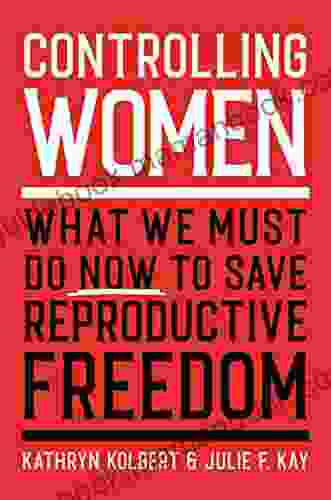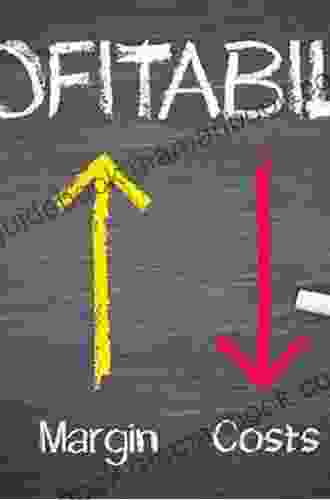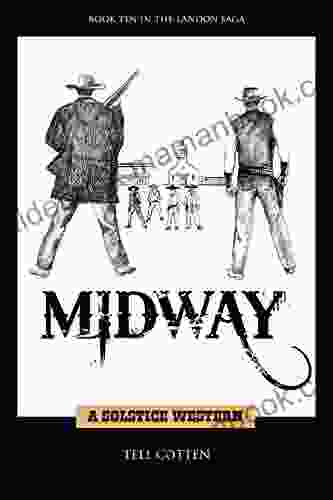A Comprehensive Guide to Category Management in Purchasing

Category management is a strategic approach to purchasing that focuses on optimizing the procurement of goods and services across an organization. It involves grouping similar items or services into categories, and then developing and implementing strategies to improve the efficiency and effectiveness of their procurement.
Category management can provide a number of benefits to organizations, including:
- Reduced costs
- Improved quality
- Increased efficiency
- Reduced risk
- Improved supplier relationships
However, category management can also be challenging to implement, as it requires a significant investment of time and resources. Organizations that are considering implementing category management should be aware of the challenges and have a clear plan in place before they begin.
4.9 out of 5
| Language | : | English |
| File size | : | 4222 KB |
| Text-to-Speech | : | Enabled |
| Screen Reader | : | Supported |
| Enhanced typesetting | : | Enabled |
| Word Wise | : | Enabled |
| Print length | : | 320 pages |
The benefits of category management can be significant for organizations that are able to successfully implement it. Some of the most common benefits include:
- Reduced costs: Category management can help organizations reduce costs by optimizing the procurement of goods and services. This can be achieved through a variety of methods, such as reducing the number of suppliers, negotiating better prices, and identifying opportunities for consolidation.
- Improved quality: Category management can also help organizations improve the quality of the goods and services they purchase. This can be achieved by working with suppliers to develop and implement quality standards, and by conducting regular quality audits.
- Increased efficiency: Category management can help organizations increase the efficiency of their procurement processes. This can be achieved by streamlining processes, reducing the number of steps involved in procurement, and automating tasks.
- Reduced risk: Category management can help organizations reduce risk by identifying and mitigating potential risks in their supply chain. This can be achieved by developing risk management plans, conducting regular supplier assessments, and diversifying the supplier base.
- Improved supplier relationships: Category management can help organizations improve their relationships with suppliers. This can be achieved by working with suppliers to develop mutually beneficial partnerships, and by communicating openly and honestly.
While category management can provide a number of benefits, it can also be challenging to implement. Some of the most common challenges include:
- Complexity: Category management is a complex process that requires a significant investment of time and resources. Organizations that are considering implementing category management should be aware of the complexity involved and have a clear plan in place before they begin.
- Lack of expertise: Category management requires a high level of expertise in a variety of areas, including purchasing, supply chain management, and finance. Organizations that lack this expertise may need to invest in training or hire external consultants.
- Resistance to change: Category management can require significant changes to existing procurement processes. This can lead to resistance from employees who are comfortable with the current way of ng things. Organizations that are implementing category management should be prepared to address this resistance.
- Supplier resistance: Suppliers may be resistant to category management if they believe that it will reduce their profits. Organizations that are implementing category management should be prepared to work with suppliers to address their concerns.
There are a number of best practices that organizations can follow to improve their chances of success with category management. Some of the most important best practices include:
- Start with a clear strategy: Before you begin implementing category management, it is important to develop a clear strategy. This strategy should include your goals for category management, the categories you will be focusing on, and the resources you will need.
- Build a strong team: Category management requires a team of dedicated individuals with expertise in a variety of areas. This team should be responsible for developing and implementing the category management strategy.
- Conduct thorough market research: It is important to conduct thorough market research before you begin developing your category management strategy. This research will help you understand the competitive landscape, identify potential suppliers, and assess the risks associated with each category.
- Develop a sourcing strategy: Your sourcing strategy should outline how you will procure goods and services for each category. This strategy should include your sourcing objectives, the suppliers you will be using, and the contracts you will be entering into.
- Manage supplier relationships: Supplier relationships are critical to the success of category management. It is important to work with suppliers to develop mutually beneficial partnerships and to communicate openly and honestly.
- Monitor and evaluate performance: It is important to monitor and evaluate the performance of your category management program. This will help you identify areas where you can improve, and it will also provide you with the evidence you need to justify your investment in category management.
Category management is a strategic approach to purchasing that can provide a number of benefits to organizations. However, it can also be challenging to implement. Organizations that are considering implementing category management should be aware of the challenges and have a clear plan in place before they begin. By following the best practices outlined in this guide, organizations can increase their chances of success with category management.
4.9 out of 5
| Language | : | English |
| File size | : | 4222 KB |
| Text-to-Speech | : | Enabled |
| Screen Reader | : | Supported |
| Enhanced typesetting | : | Enabled |
| Word Wise | : | Enabled |
| Print length | : | 320 pages |
Do you want to contribute by writing guest posts on this blog?
Please contact us and send us a resume of previous articles that you have written.
 Top Book
Top Book Novel
Novel Fiction
Fiction Nonfiction
Nonfiction Literature
Literature Paperback
Paperback Hardcover
Hardcover E-book
E-book Audiobook
Audiobook Bestseller
Bestseller Classic
Classic Mystery
Mystery Thriller
Thriller Romance
Romance Fantasy
Fantasy Science Fiction
Science Fiction Biography
Biography Memoir
Memoir Autobiography
Autobiography Poetry
Poetry Drama
Drama Historical Fiction
Historical Fiction Self-help
Self-help Young Adult
Young Adult Childrens Books
Childrens Books Graphic Novel
Graphic Novel Anthology
Anthology Series
Series Encyclopedia
Encyclopedia Reference
Reference Guidebook
Guidebook Textbook
Textbook Workbook
Workbook Journal
Journal Diary
Diary Manuscript
Manuscript Folio
Folio Pulp Fiction
Pulp Fiction Short Stories
Short Stories Fairy Tales
Fairy Tales Fables
Fables Mythology
Mythology Philosophy
Philosophy Religion
Religion Spirituality
Spirituality Essays
Essays Critique
Critique Commentary
Commentary Glossary
Glossary Bibliography
Bibliography Index
Index Table of Contents
Table of Contents Preface
Preface Introduction
Introduction Foreword
Foreword Afterword
Afterword Appendices
Appendices Annotations
Annotations Footnotes
Footnotes Epilogue
Epilogue Prologue
Prologue Leeanna Morgan
Leeanna Morgan Philip Hobsbaum
Philip Hobsbaum Bob Odenkirk
Bob Odenkirk Dr Marilyn Glenville Phd
Dr Marilyn Glenville Phd Elanena White
Elanena White Mark Kistler
Mark Kistler Ps Mathew
Ps Mathew Patrick Lee Marshall
Patrick Lee Marshall Brad Thor
Brad Thor Octavia Randolph
Octavia Randolph Joe Pulizzi
Joe Pulizzi Demetria Clark
Demetria Clark Sasha Issenberg
Sasha Issenberg Rebecca Winters
Rebecca Winters Nina Bogin
Nina Bogin Jonathan O Brien
Jonathan O Brien Alexander Dow
Alexander Dow Paul Blustein
Paul Blustein Heinz G Konsalik
Heinz G Konsalik Reds Johnson
Reds Johnson
Light bulbAdvertise smarter! Our strategic ad space ensures maximum exposure. Reserve your spot today!

 Chuck MitchellSquirrel Tale Bankers and Dog Biscuits: A Captivating Tale of Friendship and...
Chuck MitchellSquirrel Tale Bankers and Dog Biscuits: A Captivating Tale of Friendship and... James GrayFollow ·13.5k
James GrayFollow ·13.5k Gerald BellFollow ·12.2k
Gerald BellFollow ·12.2k Gary ReedFollow ·15.7k
Gary ReedFollow ·15.7k Natsume SōsekiFollow ·16.3k
Natsume SōsekiFollow ·16.3k Gabriel BlairFollow ·4.1k
Gabriel BlairFollow ·4.1k Aubrey BlairFollow ·5k
Aubrey BlairFollow ·5k Michael ChabonFollow ·12.1k
Michael ChabonFollow ·12.1k Foster HayesFollow ·9k
Foster HayesFollow ·9k

 Leslie Carter
Leslie CarterWhat We Must Do Now To Save Reproductive Freedom
Roe v. Wade, the landmark...

 Cade Simmons
Cade SimmonsThe Unbreakable Bond: Unveiling the Connection Between...
In the realm of...

 Roy Bell
Roy BellFull Contact Chapter Five: The Final Chapter of the Hatch...
In this gripping to the Hatch saga, we...

 Fred Foster
Fred FosterUnveiling the Tale of the Genpei Wars: A Comprehensive...
Deep within the annals of Japanese history,...

 Jaden Cox
Jaden CoxFerguson in Black and White: A Profound Examination of...
The Ferguson tragedy, sparked by the fatal...
4.9 out of 5
| Language | : | English |
| File size | : | 4222 KB |
| Text-to-Speech | : | Enabled |
| Screen Reader | : | Supported |
| Enhanced typesetting | : | Enabled |
| Word Wise | : | Enabled |
| Print length | : | 320 pages |











